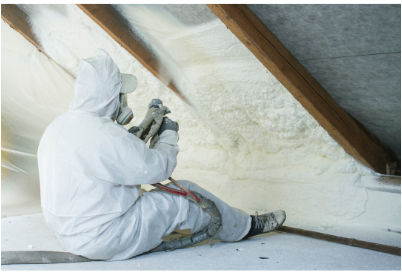Attic Insulation
If you think about how your home is exposed to the elements, where the sun hits the most and where heat will most easily escape, and it is the roof. Spray foam attic insulation forms an airtight seal that offers the best possible insulation of this vulnerable area of your home.
The result is an insulation solution that keeps warm air in when it is cooler outside and keeps the cool air in when you need to turn the aircon on. It is super effective as it is applied in a different way to traditional insulation systems.
The most common approach to insulating an attic space using fiberglass has been to lay insulation on the floor of the attic, but there are problems with this approach. The first is practicality, if you use the attic space for anything, that insulation can be crushed, which reduces its performance. The second issue is with how that insulation works.
Insulating the floor stops heat loss from the rooms below, however it leaves the entire attic space itself vulnerable. That means that in summer, heat will transfer from the roof itself into the space, making it extremely warm. Conversely, in the winter, while the floor insulation helps keep the rooms below warm, the attic space will be extremely cold.
This can be an issue if, like many homes, your heating and aircon pipes run through the attic space. That temperature imbalance will affect the performance of heating and aircon systems, costing you more money in energy to maintain a desirable temperature. If you use the attic for storing things, those extremes of heat and cold can cause issues there too.
Importantly, even if you have no pipes up there, and don’t use the space at all, the hot and cold cycle can still cause you problems. Condensation can build up and become a costly problem to fix by having installation here.
That is why spray foam attic insulation is such an effective alternative. Instead of insulating the attic floor, the entire underside of the roof is sprayed, forming a complete sealed insulation solution that keeps the entire attic space protected from those temperature variances.

